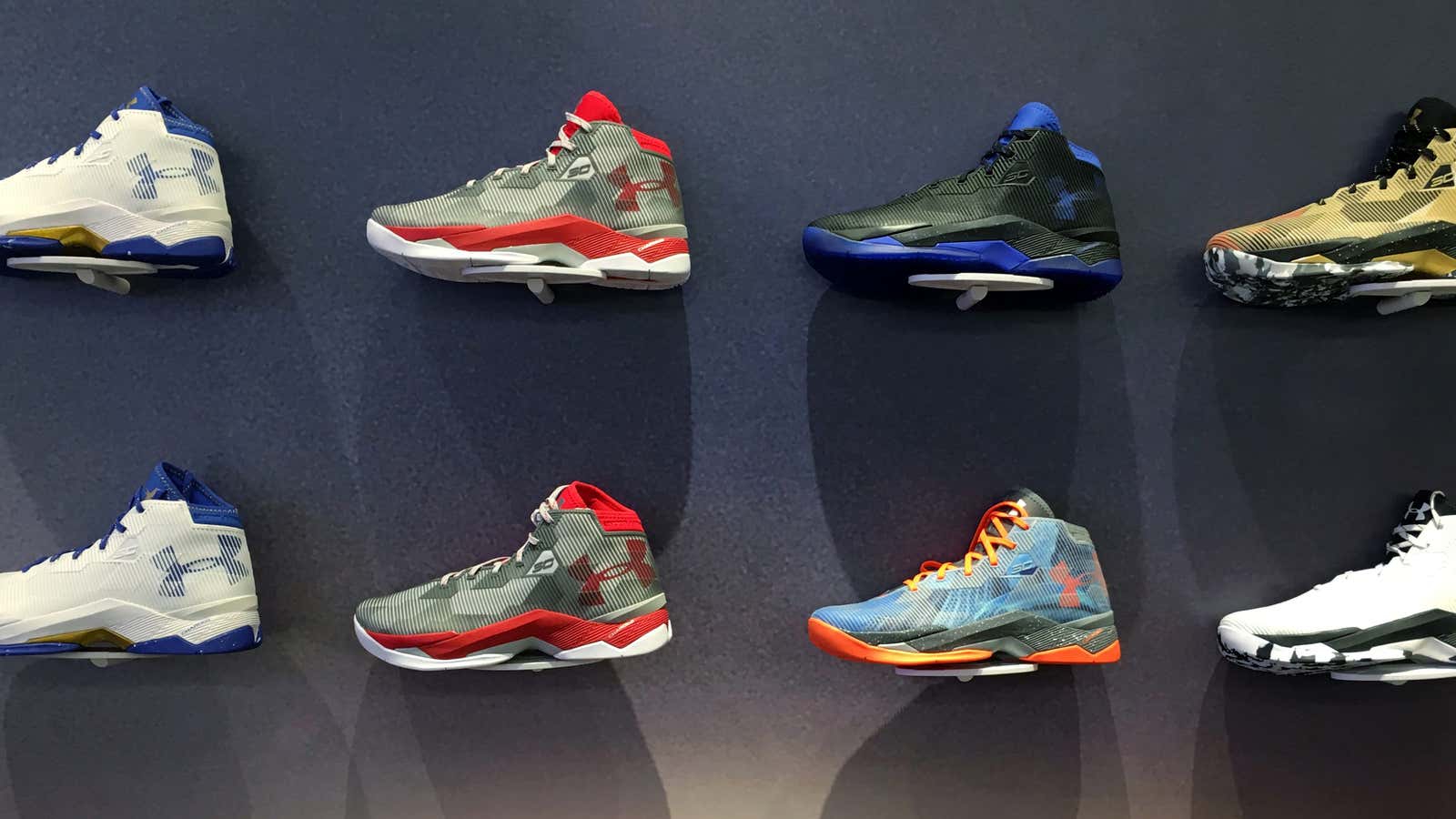Under Armour has never been shy about its ambition to challenge Nike and Adidas in their roles as the world’s top athletic brands. It has also understood that to meet this challenge, it needs sneakers to be a much bigger part of its business.
Through 2015 and 2016, Under Armour enjoyed stunning growth as it built up its footwear sales and launched its first big signature sneaker for basketball star Stephen Curry. But the category, after slowing substantially, has now officially cratered. The company reported that footwear sales fell by 2.4% in its latest earnings statement. It also lowered its 2017 growth forecast from 11-12% to 9-11%.
It would never have been easy to match the more than 40% growth in footwear Under Armour recorded in the same quarter last year, but the drop is a worry. While it is still mostly a clothing business, both Under Armour and its investors have long considered footwear one of its most promising areas.
“Footwear disappointment should not be taken lightly,” Nomura Securities warned in a note to investors after the company reported earnings today. “Footwear, after being labeled as the prime driver for UA’s next leg of growth, went negative, which should raise significant questions around UA’s ultimate Addressable Market Size as it relates to NKE and Adidas, which scaled via their much larger footwear businesses.”
Or, in plain English: The results cast doubt on whether Under Armour can ever catch up to Nike and Adidas, which built their businesses on sneakers.
It’s tough selling sneakers right now. For one, sales of basketball sneakers in the US have been in a downturn for more than a year, and Under Armour’s best-known shoe by far is its sneaker for Curry. The recent release of the Curry 3, the sneaker’s third edition, was a flop.
Perhaps more significant, Under Armour is also struggling to translate its heritage of making performance gear for athletes into products people want to wear outside of the gym as well. It has had success with footwear such as cleats and training shoes, but being a big player in athletic wear today requires being a lifestyle brand too.
On a call with investors, CEO Kevin Plank explained that he still sees a great deal of potential in shoes. “Footwear remains frankly our largest opportunity,” he stated. He said the company’s customization program, Icon, which allows customers to design the look of their shoes, is going strong; the internet-connected shoe UA offers could achieve much greater sales; and the new C1N, a signature shoe for football player Cam Newton, has had a good reception.
The company also announced a restructuring plan that—aside from streamlining the way it creates and sells products and cutting 2% (paywall) of its global workforce—will also make footwear and accessories a bigger part of its sales. As part of it, Plank suggested Under Armour will sell fewer shoes priced above $100 and more below that amount.
“We feel like we are in that position to do it,” Plank said, referring to Under Armour’s ability to grow into a major sneaker player, “we just have to execute on it.” That, of course, is the hard part.
